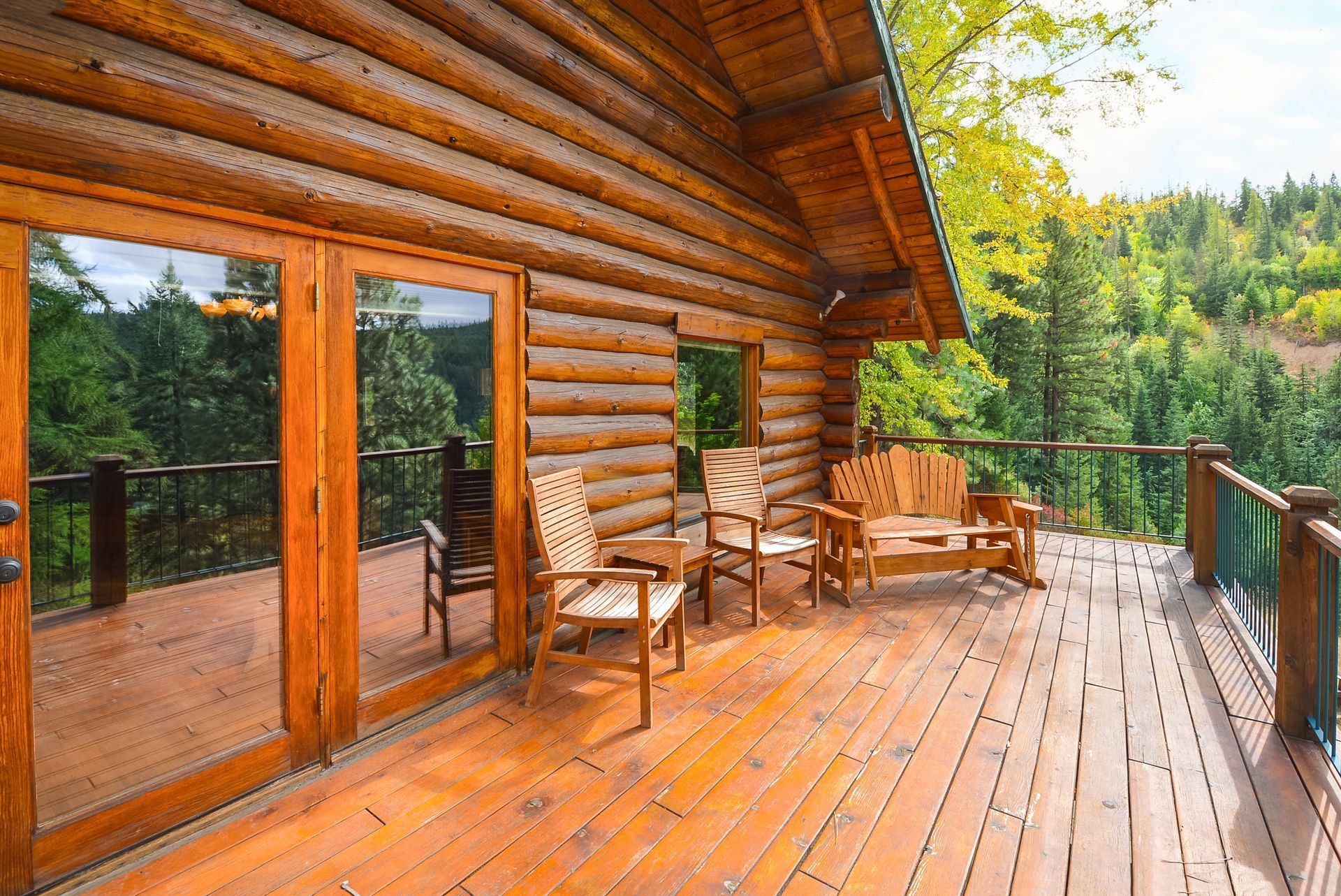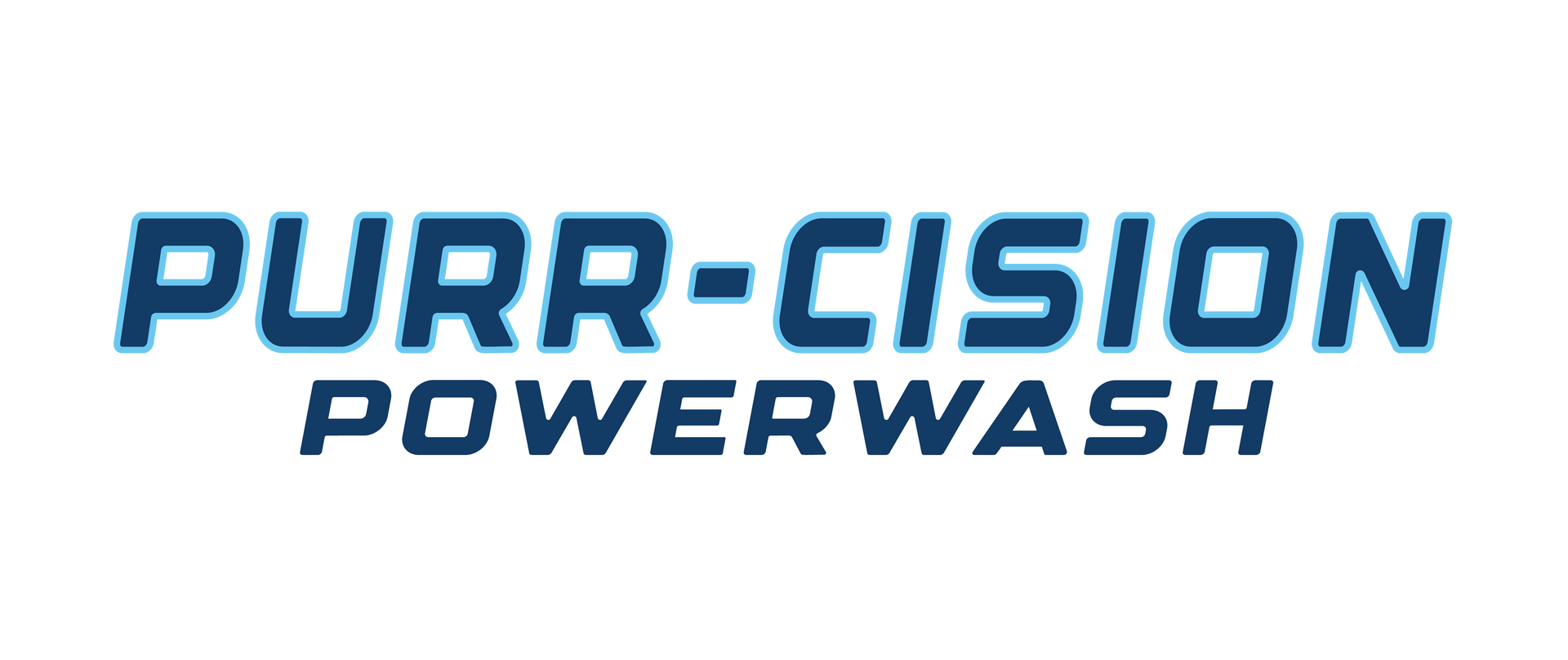LOG HOME CLEANING & RESTORATION
The very characteristics that make log homes so special also make them uniquely vulnerable. Those magnificent logs, fully exposed to the elements on both sides, face relentless attack from UV rays, moisture, insects, and organic growth. What starts as innocent-looking gray weathering or dark staining is actually the visible evidence of structural breakdown occurring within the wood itself. Our specialized log home restoration service goes far beyond cosmetic improvement—we stop active deterioration, restore structural integrity, and create a protective envelope that preserves your log home's beauty and value for decades to come.
Cleaning & Restoring Your Log Home
Why Is Professional Log Home Restoration Essential?
- Prevent Catastrophic Log Rot: Unlike conventional homes where deteriorating siding can simply be replaced, your logs ARE your structure. Once rot takes hold deep within a log, repair costs escalate into tens of thousands of dollars—often requiring log replacement, structural reinforcement, or in severe cases, complete wall reconstruction. We catch and eliminate rot at its earliest stages, before it threatens your home's integrity.
- Stop Insect Infestation Before It Starts: Carpenter bees, powder post beetles, carpenter ants, and termites are attracted to weathered, moisture-laden wood. These pests don't just damage your logs—they create entry points for moisture and secondary infestations. Our treatments and protective coatings create an inhospitable environment for wood-destroying insects.
- Eliminate Moisture Intrusion: Log homes are designed to breathe, but unprotected wood absorbs water like a sponge. This moisture causes logs to swell and contract, creating gaps in chinking, compromising corner notches, and leading to interior water damage. Our restoration and sealing process allows proper vapor transmission while preventing liquid water penetration—critical for log home longevity.
- Reverse UV Degradation: Sunlight destroys lignin (the natural polymer that binds wood fibers together) at an alarming rate. This process turns logs gray, makes them fuzzy and rough, and actually weakens the wood structure. Southern and western exposures are especially vulnerable. We remove this damaged surface layer and apply UV inhibitors that dramatically slow future degradation.
- Protect Against Mold & Mildew: The dark staining on your logs isn't just dirt—it's living organisms feeding on your home's structure. Mold and mildew don't just grow on the surface; they send root-like structures (hyphae) deep into the wood, causing discoloration that penetrates inches into the log and creating pathways for water intrusion. We kill these organisms completely and apply treatments that prevent recolonization.

- Maintain Energy Efficiency: Weathered, unprotected logs allow air infiltration that sends your heating and cooling costs soaring. Proper restoration and sealing dramatically improve your home's thermal envelope, reducing energy waste and creating more consistent interior comfort.
- Preserve Irreplaceable Value: Log homes often appreciate faster than conventional homes—but only if properly maintained. A neglected log home can lose 20-40% of its value, while a meticulously maintained one commands premium pricing. Our restoration protects what is often your family's largest asset.
Our Log Home Cleaning & Restoration Process
1. Detailed Structural Inspection & Documentation
We conduct a comprehensive assessment of your entire log structure, examining every wall, corner system, window and door openings, and roof-to-wall interfaces. We check for:
- Active or past insect damage
- Areas of rot or soft wood
- Failed chinking or caulking
- Moisture intrusion points
- Checking (natural cracking) that needs addressing
- Previous coating failures
- Structural settlement issues
We document everything photographically and provide you with a detailed report outlining necessary repairs before restoration begins.
2. Essential Pre-Restoration Repairs
Before cleaning begins, we address critical issues that could worsen during the process or prevent proper coating adhesion:
- Replace or repair damaged chinking and caulking
- Treat or replace compromised logs
- Address drainage issues directing water toward logs
- Repair or adjust gutters and downspouts
- Fix any structural issues affecting log alignment
3. Aggressive Media Blasting (When Necessary)
For logs with heavy buildup, failed previous coatings, or deep mill glaze that prevents stain penetration, we use specialized media blasting. This process removes:
- Failed or peeling stains and sealers
- Heavy mold and mildew staining
- Fire retardant residues
- Oxidized surface wood (mill glaze)
- Stubborn mill staining and sap
We use carefully selected media (corn cob, walnut shell, or glass bead) appropriate for your wood species and condition, removing damage without harming healthy wood underneath.
4. Professional Chemical Cleaning & Brightening
For logs in better condition or after media blasting, we apply a three-step chemical treatment process:
Deep Cleaning: Professional-grade cleaners formulated specifically for log homes strip away mold, mildew, algae, dirt, and pollen. These aren't hardware store products—they're pH-balanced solutions designed to clean without raising wood grain or causing damage.
Brightening/Neutralizing: We apply oxalic acid-based brighteners that neutralize the cleaning solution, remove tannin and metal stains, and restore wood to its natural light color. This step is crucial—it opens wood pores for optimal stain penetration and creates uniform coloration.
Fungicidal Treatment: For logs with persistent mold or areas prone to moisture, we apply EPA-registered fungicides that kill remaining spores and create a hostile environment for future growth.
5. Controlled Pressure Rinsing
Using carefully regulated low-pressure washing, we rinse away all chemical residues and loosened contaminants. Our technique removes degraded surface wood without the furring or grain raising that occurs with high-pressure washing. We pay special attention to horizontal surfaces, under eaves, and areas that trap debris.
6. Comprehensive Drying Period
This is where many contractors fail. Logs—especially large ones—need substantial drying time. We allow 5-7 days (or longer in humid conditions) and verify moisture content with professional moisture meters. Applying finish to inadequately dried logs causes adhesion failure, blistering, and premature coating breakdown.
7. Borate Treatment Application (Highly Recommended)
Before staining, we strongly recommend borate treatment—a critical step many contractors skip. Borates are naturally occurring minerals that:
- Provide long-term protection against wood-destroying insects
- Inhibit fungal growth and wood rot
- Penetrate deep into log structure
- Are safe for humans and pets once dry
- Remain effective for many years
This treatment is especially critical for areas with carpenter bee, powder post beetle, or termite pressure.
8. Caulking & Chinking Restoration
Before final coating, we address all gaps and joints:
- Apply or replace synthetic chinking in log-to-log interfaces
- Install high-quality elastomeric caulking around windows, doors, and penetrations
- Seal all checks (natural cracks) over 1/4" deep to prevent water intrusion
- Ensure proper backer rod installation for optimal caulk performance
Proper air and water sealing is as important as the finish itself—they work together as a complete protective system.
9. Premium Stain Application
We apply commercial-grade log home stain specifically formulated for horizontal log surfaces (NOT deck stain or fence stain). Our stain systems include:
- High-Quality Pigments: UV-blocking pigments that prevent sun damage while allowing wood grain to show through
- Penetrating Oils: Deep-penetrating formulas that soak into wood fibers rather than forming a surface film
- Mildewcides & Fungicides: Built-in protection against organic growth
- Water Repellents: Ingredients that cause water to bead and shed rather than absorb
- We apply multiple coats using specialized techniques—back-brushing to work stain into wood grain, ensuring coverage in checks and crevices, and building proper mil thickness for long-term protection. We typically apply 2-3 coats depending on wood species, exposure, and previous condition.


